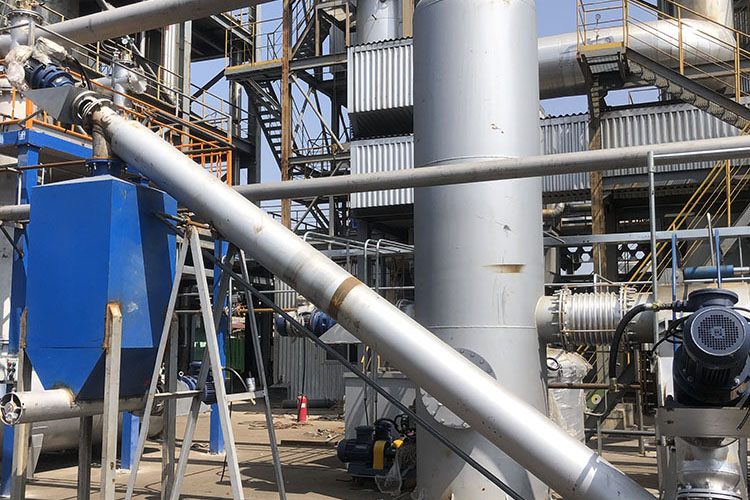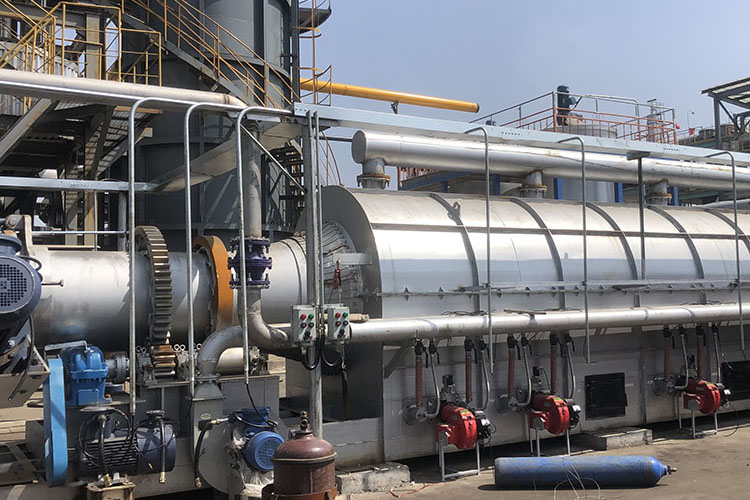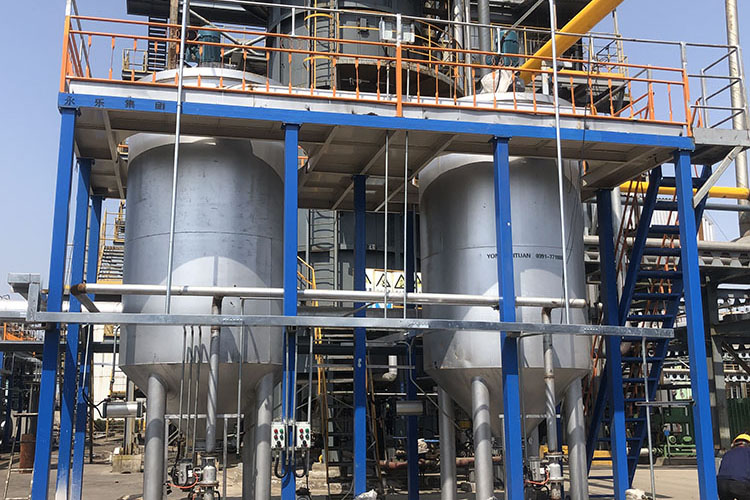Sewage sludge is a common solid waste in petrochemical, oil refining, storage and transportation industries. It contains a large amount of organic matter, heavy metals and harmful substances, posing a serious threat to the environment and human health. In order to effectively treat and dispose of dirty oil sludge and reduce its pollution to the environment, modern technology has developed various dirty oil sludge disposal equipment. These equipment can not only reduce the harmful components of sewage sludge, but also recover useful resources and realize the resource utilization of waste.
The main types of waste sludge disposal equipment include drying equipment, pyrolysis equipment, incineration equipment, stabilization/solidification equipment, physical and chemical treatment equipment, etc. Each equipment has its own unique working principle and application scenarios. Choosing the right equipment based on the specific characteristics and disposal requirements of the sewage sludge is key.

First of all, drying equipment is a device that reduces the volume and weight of waste oil sludge by reducing its moisture content. During the drying process, the water in the sludge is evaporated, making the sludge more stable and easier to handle. Common drying equipment includes paddle dryers, rotary dryers, flash dryers, etc. These devices use different heating methods and heat transfer media to quickly evaporate the water in the dirty sludge. The dried sewage sludge can be further recycled or incinerated.
Secondly, pyrolysis equipment is a device that uses the pyrolysis reaction of dirty oil sludge under high temperature conditions to decompose it into gas, liquid and solid products. The pyrolysis process can effectively reduce the volume of dirty sludge, and the decomposition products contain a large amount of flammable gases and oils, which can be used as energy. Common pyrolysis equipment includes rotary kilns, fluidized bed reactors, etc. These equipment decompose the organic matter in the sewage sludge at high temperature and convert the inorganic matter into inert ash to achieve the purpose of harmless treatment.
Incineration equipment is a type of equipment that completely decomposes harmful substances in sewage sludge through high-temperature combustion. During the incineration process, the organic matter in the sewage sludge is completely oxidized to generate carbon dioxide and water vapor, while the inorganic matter is converted into slag and fly ash. Common incineration equipment includes cyclone furnaces, fluidized bed incinerators, rotary kiln incinerators, etc. Incineration treatment can not only completely eliminate harmful components in sewage sludge, but also use the heat generated by combustion for energy recovery, which is an efficient disposal method.

Stabilization/curing equipment is a method that fixes harmful substances in sewage sludge in a solid matrix by adding chemicals or additives, thereby reducing their mobility and bioavailability. Stabilization/solidification treatment can convert sewage sludge into stable solid waste, reducing its risk of environmental pollution. Common stabilization/curing equipment include stirring mixers, spiral mixers, etc. These devices fully mix the sewage sludge and the curing agent to cause a chemical reaction to form a stable solid material.
Physical and chemical treatment equipment is equipment that separates, purifies and treats dirty oil sludge through physical and chemical methods. These equipment include centrifuges, filtration equipment, flotation equipment, chemical precipitation equipment, etc. Physical and chemical treatment can effectively separate solid, liquid and gas components in sewage sludge, recover useful resources, and remove harmful substances. The centrifugal separator separates the solid and liquid in the dirty oil sludge through the centrifugal force generated by high-speed rotation; the filtration equipment intercepts the solid particles in the dirty oil sludge through the filter medium; the flotation equipment uses bubbles to remove the grease and suspended matter in the dirty oil sludge. to the liquid surface for separation; chemical precipitation equipment adds chemicals to precipitate harmful substances in the sewage sludge, thereby achieving the purpose of purification.
In the actual application of sewage sludge disposal equipment, not only the processing capacity and efficiency of the equipment must be considered, but also factors such as treatment cost, environmental impact, and resource recovery must be considered comprehensively. With the increasingly stringent environmental regulations and the improvement of public awareness of environmental protection, the research and development and application of waste sludge disposal equipment are also constantly developing and improving.

Overall, sludge disposal equipment plays an important role in pollution control and resource recovery. Through reasonable selection and use of these equipment, the harm of dirty oil sludge to the environment can be effectively reduced, the recycling of resources can be realized, and contributions to sustainable development can be achieved. In the future, with the advancement and innovation of science and technology, it is believed that sewage sludge disposal technology will be more efficient and environmentally friendly, creating a better living environment for mankind.
Yongle Environmental Protection is mainly engaged in the research and development, production and sales of complete sets of technical equipment for organic solid waste disposal and comprehensive utilization. Production and manufacturing, domestic waste treatment equipment, tire pyrolysis equipment, medical waste disposal equipment, hazardous waste disposal equipment, and achieve efficient and comprehensive utilization of resources through independently developed low-temperature anaerobic pyrolysis equipment technology solutions.
Tags:The role of sludge disposal equipment,Waste sludge disposal equipment,The role of sludge disposal equipment,sludge disposal equipment,YongleGroup
 Latest news
Latest news


























